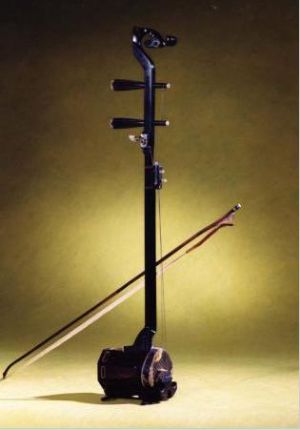Huqin
The earliest Chinese stringed instrument appeared in the Tang Dynasty. To make a sound, one rubbed the strings with bamboo slips. It was not until the Song Dyansty (960 - 1279) was there a record of an instrument with horsetail strings.
In ancient times, the people living in the Central Plains called all ethnic minorities living in western and northern China the hu. Therefore, their musical instruments were collectively called huqin.
The people in the Central Plains began using stringed instruments to play solos during the Song, reaching a fairly high level of performance skill.
When the Mongols unified the entire Central Plains, they brought their matouqin (horse-headed fiddle), a bowed stringed-instrument with a scroll carved like a horse's head. It is popular in Mongolian music. With a history of over 1,300 years, it even influenced European string music when Marco Polo brought one back from his travels through Asia. Its wide tonal range and deep, hazy tone color express the joy or pathos of a melody to its fullest.
Huqin are divided into many varieties, with different shapes and locally available resources. When playing, the player usually stands it on his lap, and moves the bow across the vertical strings.
